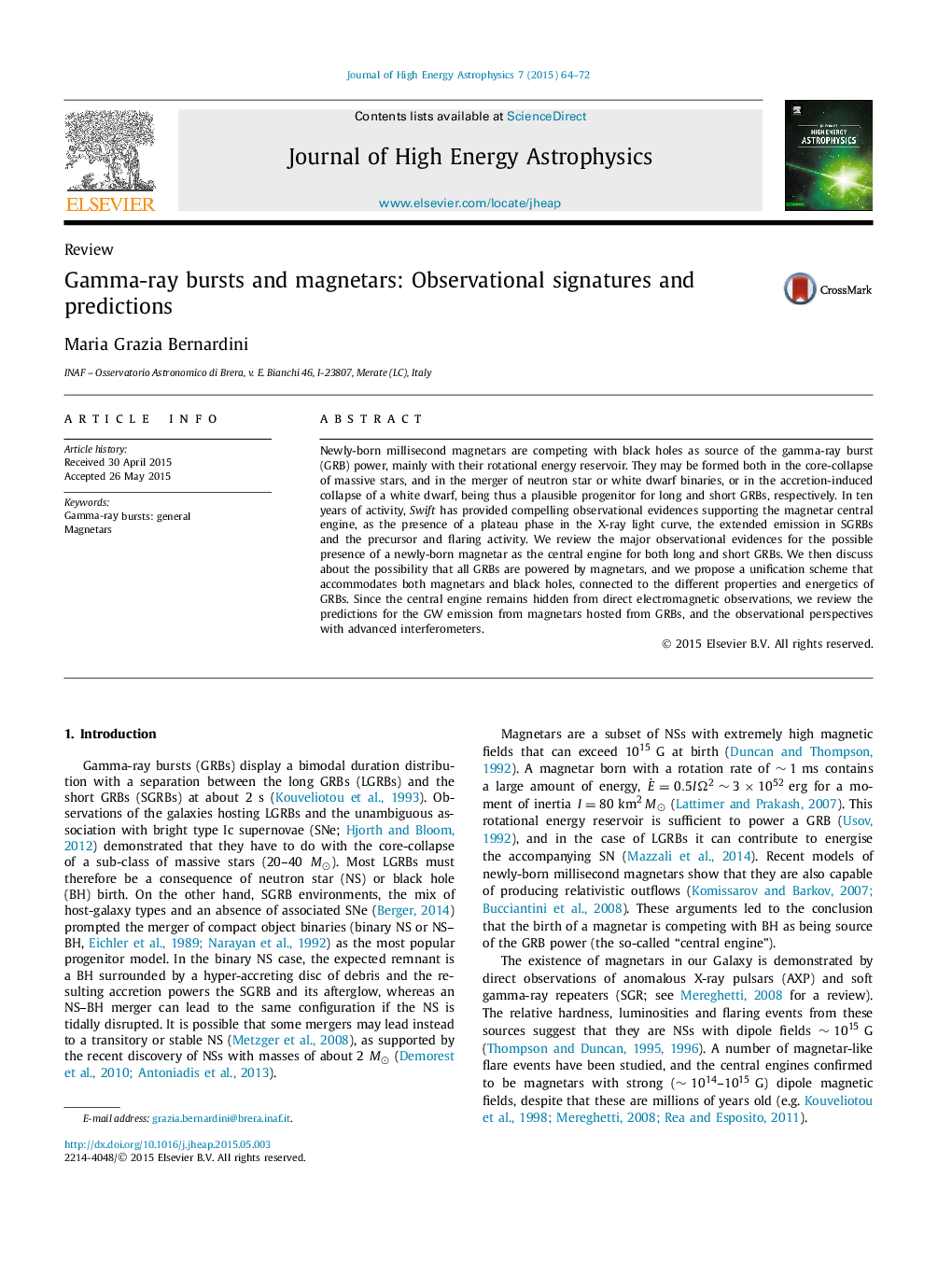| Article ID | Journal | Published Year | Pages | File Type |
|---|---|---|---|---|
| 1778634 | Journal of High Energy Astrophysics | 2015 | 9 Pages |
Abstract
Newly-born millisecond magnetars are competing with black holes as source of the gamma-ray burst (GRB) power, mainly with their rotational energy reservoir. They may be formed both in the core-collapse of massive stars, and in the merger of neutron star or white dwarf binaries, or in the accretion-induced collapse of a white dwarf, being thus a plausible progenitor for long and short GRBs, respectively. In ten years of activity, Swift has provided compelling observational evidences supporting the magnetar central engine, as the presence of a plateau phase in the X-ray light curve, the extended emission in SGRBs and the precursor and flaring activity. We review the major observational evidences for the possible presence of a newly-born magnetar as the central engine for both long and short GRBs. We then discuss about the possibility that all GRBs are powered by magnetars, and we propose a unification scheme that accommodates both magnetars and black holes, connected to the different properties and energetics of GRBs. Since the central engine remains hidden from direct electromagnetic observations, we review the predictions for the GW emission from magnetars hosted from GRBs, and the observational perspectives with advanced interferometers.
Keywords
Related Topics
Physical Sciences and Engineering
Physics and Astronomy
Astronomy and Astrophysics
Authors
Maria Grazia Bernardini,
